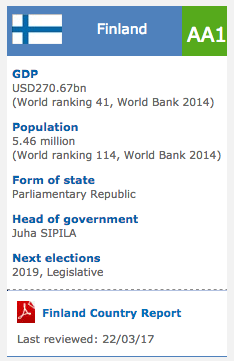Malawi: Maldives Art / Culture Profile 2012
2012/03/19
Malaysia Art / Culture Profile 2012
Maldivian culture is derived from a number of sources, the most important of which are its proximity to the shores of Sri Lanka and South India. Thus the population is mainly Dravidian from the anthropological point of view.
The language is from Indo-Iranian Sanskritic origin, which points at a later influence from the North of the Subcontinent. According to the legends, the kingly dynasty that ruled the country in the past has its origin there.
Possibly these ancient kings brought Buddhism from the Subcontinent, but it is not clear. In Sri Lanka there are similar legends, but it is improbable that the ancient Maldive royals and Buddhism came both from that island because none of the Sri Lankan chronicles mentions the Maldives. It is unlikely that the ancient chronicles of Sri Lanka would have failed to mention the Maldives if a branch of its kingdom would have extended itself to the Maldive Islands.
Since the 12th cemtury AD there are also influences from Arabia in the language and culture of the Maldives because of the general conversion to Islam in the 12th century, and its location as a crossroads in the central Indian Ocean.
In the island culture there are a few elements of African origin as well from slaves brought to the court by the Royal family and nobles from their Hajj journeys to Arabia in the past. There are islands like Feridhu and Maalhos in Northern Ari Atoll, and Goidhu in Southern Maalhosmadulhu Atoll where many of the inhabitants trace their ancestry to released African slaves.
Music and dance
Culturally Maldivians feel some affinity to Northern India through their language, which is related to the languages of North India. Most older generation Maldivians like to watch Hindi movies and like to listen to Hindi songs. Many popular Maldivian songs are based on Hindi tunes. The reason is that out of a similar language, similar rhythms and cadences develop. In fact it is very easy for Maldivians to fit local lyrics into a Hindi song. Hindi songs are among the most popular songs in Maldives, especially the old ones from Mohammed Rafi, Mukesh, Lata Mangeshkar, Asha Bhonsle. Therefore most local Maldivian dances and songs are based in (or influenced by) North Indian dances Kathak and Hindi songs.
The favourite musical instrument of Maldivians is the bulbul, a kind of horizontal accordion. This instrument is also used to accompany devotional songs, like Maulūd and Maadhaha. The Bodu-Beru (literally "Big Drum") drumming performances, are said to have African roots.
Among the popular celebrations, some include carnival-like costumes. like Maali Neshun, Bodu Maali, Bey and Bodu Mas. The costumes are made with palm frond and sack cloth, and some of them look quite spectacular.
Marriage
Maldivian culture shares many aspects of a strong matriarchal tradition with ancient Dravidian culture. A unique feature of Maldivian society is a very high divorce rate by either South Asian or Islamic standards. This is not so in the case of Minicoy Island though, where marriages are more stable.
Local spirituality
The Maldives is an exclusively Islamic society. It is common to hear Maldivians refer to their country as a "100 percent Muslim country" . But there is a widespread belief in evil spirits. For protection against such evils, people often resort to various charms and spells. The extent of these beliefs has led some observers to identify a magico-religious system parallel to Islam known as fanditha, which provides a more personal way for the islanders to deal with either actual or perceived problems in their lives. However this is a dying tradition that can be seen in only rural areas.
- Malawi News
-
- BOTSWANA: Africa: USA-Africa - No Policy? Bad Policy? or Both?
- BOTSWANA: Africa: U.S. State Department To Get Experienced Diplomat in Key Africa Post
- BOTSWANA: Africa’s economic growth in 2016 was driven by East Africa
- BOTSWANA: Africa property offers rich pickings for the brave
- BOTSWANA: Bill Gates sees US likely to maintain aid levels for Africa
- BOTSWANA: Africa: Graca Challenges Women, Girls to Grab Emerging Opportunities
- Trending Articles
-
- KENYA: Kenya to hold fresh presidential election on October 17
- BOTSWANA: Africa: U.S. State Department To Get Experienced Diplomat in Key Africa Post
- BOTSWANA: Africa: USA-Africa - No Policy? Bad Policy? or Both?
- HUNGARY: Hungary registers trade surplus of 5.4 bln euros in H1 2017
- KENYA: Kenya's overall inflation rate rises by 8 pct in August
- ZAMBIA: Zambia insists on fish import restriction despite deficit












